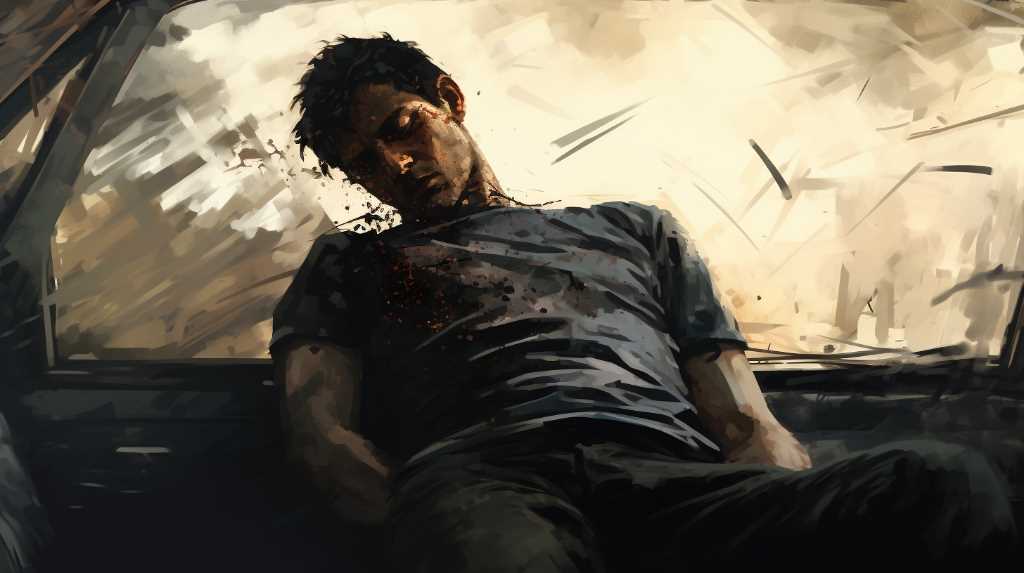
Seat belts are essential for keeping you safe in a car, but sometimes they can cause injuries during a crash. These injuries can happen to different parts of your body, especially your chest and ribs, because the seat belt holds you tight to stop you from moving too much.
You might also hurt your stomach or back, especially if you’re not wearing the seat belt correctly or the crash is very severe.
It’s important to know about these risks so we can find ways to prevent them and make driving safer for everyone.
Types of Seat Belt Injuries
Seat belts are important for keeping you safe in a car, but they can sometimes cause injuries if there’s a crash. These can include scrapes, bruises, and broken bones. When a car stops suddenly, the seat belt holds you in place, which can lead to these injuries.
Scrapes happen when the belt rubs against your skin, while bruises are from the belt pressing hard against your body. Broken ribs or collarbones might happen from the force of the shoulder strap during a big impact. These kinds of injuries have a special name called ‘seat belt syndrome,’ which describes the common injuries people get from seat belts in car accidents.
It’s essential to wear a seat belt to protect yourself, but it’s also good to know about these injuries so you can understand the risks and be careful. Always make sure your seat belt fits you well and is worn correctly to help lower the chance of getting hurt.
Causes of Seat Belt-Related Trauma
Seat belts are there to keep you safe in a car crash, but sometimes they can cause injuries. The belt goes over your lap and shoulder to spread out the force during a crash, protecting your hips and chest. But if the crash is really strong, the belt can press too hard and hurt these areas, causing bruises, stomach injuries, or even broken ribs.
Also, when the car stops suddenly, your body can lurch forward, and this might lead to ‘seat belt syndrome,’ which is when you get hurt inside your belly and your spine. If you don’t wear your seat belt right, these problems can get worse.
This is why it’s so important to wear your seat belt correctly every time you get in a car.
Impact on Chest and Ribs
In a serious car crash, the seat belt can save you from being thrown out of the car, but it can also hurt your chest and ribs. Even though it can cause anything from small bruises to bad internal harm, it’s crucial because it keeps you inside the car.
If you’re in pain, have bruises, or find it hard to breathe after an accident, it might mean you have a broken rib or breastbone. The force from the crash can also bruise your heart or lungs. Doctors will often use X-rays or CT scans to see how bad the injury is.
Depending on the injury, you might just need painkillers and to be watched by a doctor, or you might need surgery if it’s more serious.
Abdominal and Spinal Concerns
People in car crashes can get hurt in their belly and back, not just their chest and ribs. The seat belt, which is meant to keep you safe, can actually hurt your stomach and spine if the crash stops the car suddenly. The belt can press too hard against your stomach, maybe causing bruises, tears, or even holes in your muscles or intestines. You might feel sore or tender in that area, or show signs of irritation in the lining of your abdomen.
Your spine can also be hurt from the crash, possibly breaking bones, knocking them out of place, or harming your spinal cord. To figure out how bad the injuries are, doctors will take pictures of the inside of your body using X-rays or CT scans. Sometimes, surgery is needed to fix these injuries, along with other medical care to help you recover.
Preventative Measures and Tips
To stay safe and lessen the chance of getting hurt by seat belts in car crashes, it’s really important to use them the right way.
Doctors have shown that you should put the lap part of the seat belt low over your hips, not your stomach. This way, if there’s a crash, the force spreads over a stronger part of your body and keeps your insides safer.
The part of the belt that goes over your shoulder should go across the middle of your chest and shoulder but not touch your neck. This helps prevent injuries to your chest and neck.
Make sure the belt stays tight against you during a crash by checking the retractor is working properly. You should also adjust the seat height and angle to fit your body shape, so the belt fits you best.
If you’re pregnant, the lap belt should go under your belly, and the shoulder belt should be placed to the side of your neck and between your breasts.
Conclusion
Seat belts save lives, but they can also cause certain injuries during car crashes. Most often, these injuries affect the chest, ribs, stomach, and back.
Even though there’s a risk of getting hurt, it’s still way better to wear a seat belt because it really lowers the chance of serious injury or dying in an accident. That’s why it’s so important to keep making seat belts better and teaching people how to wear them properly.
Learning how to adjust and fit your seat belt right can help cut down on these injuries.